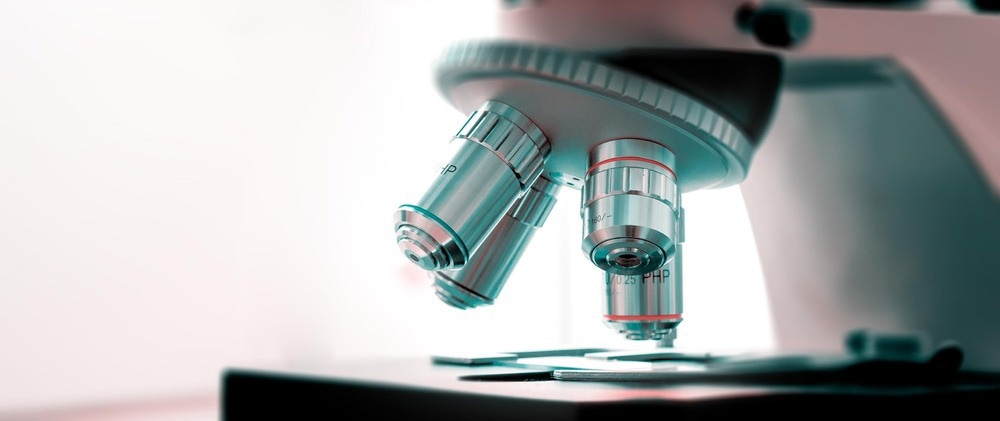In a recent article published in Nature Communications, researchers introduced a novel multi-modal microscopy technique to study the local electrochemical activity and defect properties of photoelectrocatalysts, which use sunlight to drive chemical reactions such as water splitting.

Image Credit: luchschenF/Shutterstock.com
Their technique aims to reveal how microstructural and chemical defects strongly influence the efficiency of metal-oxide photoanodes, such as hematite, and suggests that some imperfections may benefit photoelectrocatalysis.
Background
Photoelectrocatalysts utilize sunlight to initiate chemical reactions, such as water splitting, which generates hydrogen and oxygen from water. Hydrogen can be used as a clean and renewable fuel, making photoelectrocatalysis a promising energy conversion and storage technology.
However, the development of efficient photoelectrocatalysts faces a significant challenge in understanding and controlling the complex interplay among material structure, composition, and function across various length and time scales.
Metal-oxide semiconductors, like hematite, are widely studied as photoanodes for water splitting due to their robust stability, cost-effectiveness, and widespread availability. However, their performance is limited by several factors, including poor charge separation, slow water oxidation kinetics, and high overpotentials.
These factors are influenced by structural and chemical disorders in the material, such as cracks, grain boundaries, oxygen vacancies, and impurities. To optimize the photoelectrocatalytic properties of metal oxides, it is essential to establish connections between the local structure and composition of the material and its electrochemical activity and charge carrier dynamics.
About the Research
In this paper, the authors developed a multi-modal microscopy setup that integrates various optical techniques to simultaneously investigate the electrochemical environment, hole population dynamics, oxygen vacancy concentration, and crystal structure of photoelectrocatalysts at sub-micron length scales and across a wide range of timescales (from nanoseconds to seconds). Their setup comprises the following components:
- Photocurrent mapping: Measures the local current density generated by the photoelectrode under illumination and bias conditions.
- Transient reflection microscopy (TRM): Monitors time-resolved photoinduced absorption of holes in the material, offering insights into their population dynamics and recombination processes.
- Spectral reflectivity imaging: Measures changes in the band-edge reflection spectrum of the material with varying bias, providing information about the concentration and distribution of oxygen vacancies.
- Raman imaging: Offers insights into the local chemical structure and composition of the material, including its evolution under bias and illumination.
The researchers employed their setup using a hydrothermal method to investigate the local photoelectrochemical activity, hole lifetimes, oxygen vacancy concentrations, and crystal structure of thin films of hematite deposited on conductive glass substrates.
Specifically, they examined three regions with different microstructures: cracks, regions adjacent to cracks, and flat uncracked films. They explored regions with varying film thicknesses, ranging from 145 nm to 310 nm. They also conducted in situ X-Ray near-edge absorption microspectroscopy to examine structural changes under light and bias conditions.
Research Findings
The outcomes highlighted the significant influence of microstructural and chemical defects on the photoelectrocatalytic activity and hole dynamics of hematite. Key observations from the study included:
- Regions adjacent to cracks: Exhibited higher photocurrent density, fill factor, and incident photon-to-current efficiency compared to flat or cracked regions, particularly at low potentials. This enhancement was attributed to an optimal oxygen vacancy concentration that promotes charge separation and reduces back electron recombination.
- Thinner film regions: Demonstrated higher photocurrent density and fill factor than thicker regions due to a lower oxygen vacancy concentration and reduced trapping effects. Thinner regions also exhibited a lower onset potential for photocurrent generation and water oxidation, indicating faster charge transfer to the surface.
- Hole lifetimes: As measured by TRM, increased with bias and followed the trend of adjacent to crack ≈ flat > crack, indicating a higher potential requirement for charge separation and suppression of back electron recombination in crack regions.
- Spectral reflectivity: As measured by differential reflection spectroscopy, revealed a negative peak around 570 nm that intensified with bias, reflecting the generation of ionized oxygen vacancies. The peak was larger in regions adjacent to cracks and thicker regions than flat or thinner regions, indicating a higher oxygen vacancy concentration.
- Raman spectra: Obtained through Raman imaging, exhibited various modes corresponding to the iron-oxygen (Fe-O) bond stretch and the oxygen-to-oxygen (O-O) symmetric stretch. The intensity and position of these modes varied with bias and illumination, suggesting the reorganization of oxygen vacancies and lattice distortions. Iron (iii) oxide-hydroxide (FeOOH), a tetragonal defect, was detected in some regions through Raman spectra.
Applications
The authors showcased the efficacy of their multimodal microscopy setup in unraveling the structure-function relationships inherent in photoelectrocatalysts. By concurrently investigating the material's electrochemical activity, charge carrier dynamics, oxygen vacancy concentration, and chemical structure, their approach offers invaluable insights.
It also enables the identification and optimization of factors crucial for enhancing water-splitting efficiency while proposing innovative strategies for engineering defects and morphologies conducive to photoelectrocatalysis.
This setup's versatility extends beyond water splitting, facilitating its application in studying other metal-oxide systems and reactions, such as carbon dioxide (CO2) reduction, nitrogen fixation, and organic synthesis.
Conclusion
The novel microscopy setup effectively mapped and correlated the local electrochemical activity, with oxygen vacancy concentrations, hole lifetimes, and photoelectrode crystal structure.
The study revealed the significant impact of microstructural and chemical defects on water-splitting efficiency, suggesting that specific imperfections could enhance photoelectrocatalysis.
The researchers emphasized the necessity of moving beyond macroscopic measurements and advancing methods for in situ probing of photoelectrocatalytic systems with high spatial and temporal resolution.
Journal Reference
Mesa, CA., Sachs, M., Pastor, E., et al. (2024). Correlating activities and defects in (photo)electrocatalysts using in-situ multi-modal microscopic imaging. Nat Commun. doi.org/10.1038/s41467-024-47870-9
Disclaimer: The views expressed here are those of the author expressed in their private capacity and do not necessarily represent the views of AZoM.com Limited T/A AZoNetwork the owner and operator of this website. This disclaimer forms part of the Terms and conditions of use of this website.